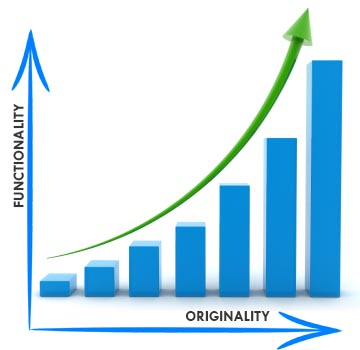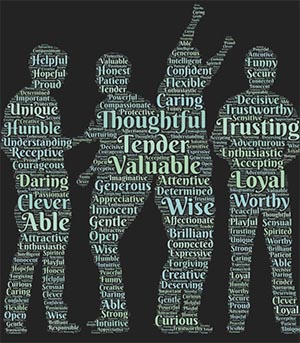Our journey of Creativity is possible with the help of our friends

How do psychologists explain creativity? Creativity is a tricky term to describe at best. There is no clear consensus as to what it actually attributes to, or what the hard and fast traits are a person should possess before he might be termed creative.
Some people describe creativity as the ability to solve problems, while others see it as creating new things in novel, innovative ways that are different from what has already been done.
Modules of Creativity

Creativity, when studied in terms of results, can be broken down to contain two primary components:
Originality
The idea should result in something original and novel, something that hasn’t been done or seen before. It shouldn’t be an extension of something already done by someone else, rather remain resplendent in a category of its own.Functionality
The idea should result in functional and useful results. It should realistically and practically work.
How can creativity be classified?
Psychologist and students of creativity tend to distinguish it into different types. This is termed the ‘four C’ model of creativity, and it is as follows:
Mini-C
This subdivision involves personal ideas and insights that are meaningful and known only to self.Little-C
This type of creativity focuses on everyday problem solving and adapting to changing environments. This creativity helps people manage the little problems that come up on a daily basis and tackle the changing circumstances of everyday life.Pro-C
Pro-C, or professional creativity, involves people being creative in their own professions and vocations. They are skilled and innovative in the immediate fields they are employed in but fail to earn recognition and eminence for their work and ideas.Big-C
This type of creativity is, obviously, the most prominent. It involves works and ideas that are considered great and life-changing in their fields. This creativity leads to world acclaim, from era-defining creations like medicate innovations and artistic achievements to technological advances and great feats of engineering.
What is termed creative?

Psychologist Mihaly Csikszentmihalyi, in his book Creativity: Flow and the Psychology of Discovery and Invention, suggested that creativity can be seen in a few different situations.
In people who are stimulating and interesting, who have a variety of different and unusual thoughts that might be considered radical.
In people who are able to see the world through the prism of fresh and unadulterated perspective. Such people have insightful ideas and make important discoveries that they usually keep to themselves, unable to discuss their thoughts with their peers since they do not expect them to understand.
In people who make inventions and shore up a lot of creative achievements. These become known to the entire world, their name famous and their personality coveted. People like Mozart and Einstein would come under this subdivision.
What does being creative require?
Experts agree that creative people tend to have a few key characteristics that lead to their innovative way of thinking and perceiving the world. Some of them are:

Energy
Creative people tend to possess a great deal of physical and mental energy. When struck with a brilliant idea, they can’t wait any longer to put their thoughts to the test.Paradoxically, they tend to spend a lot of their time quietly thinking and reflecting.
Intelligence
Creative people understand easily concepts that others might find difficult to grasp. Their receptive minds allow them to analyse problems from different angles and use the various assessments to create a concrete picture.While it is accepted that creative people tend to be intelligent and have a high IQ, it isn’t necessary that higher IQ individuals are creative. If a smart person able to learn things easily does not have a curious disposition or a fresh perspective, he/she cannot build creative ideas.
Discipline
Creative people aren’t always put together and mannered. They are playful and lively, yet they possess a dedicated and diligent nature that allows them to follow projects through with unerring passion and devotion. They aren’t easily discouraged or side-tracked. They tend to finish what they are working on, no matter what the end result is.
While some people are born with the open minds needed to channel creativity, others can improve upon their personalities to emulate closely what creative people already have. Creativity isn’t a finite source. It is infinite, and it can be available to everyone if they only agree to pay the price.
Creativity is like a muscle. The more you use it, the stronger it gets and the easier it is to use when an athlete runs every morning and practices reaching his/her maximum speed, even in moments of unconscious though they are still able to access this speed. Similarly, the disciplined practice can make creative thoughts a natural reaction to a problem.